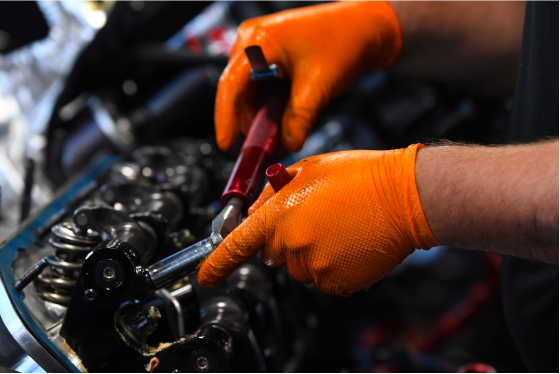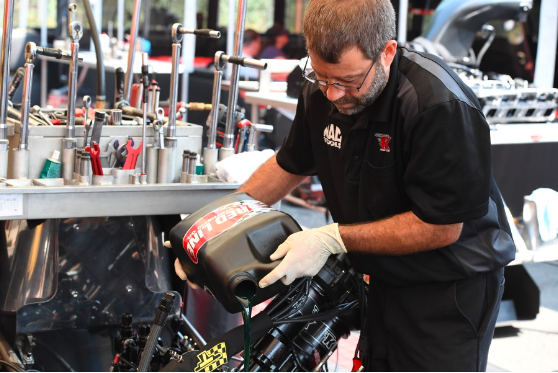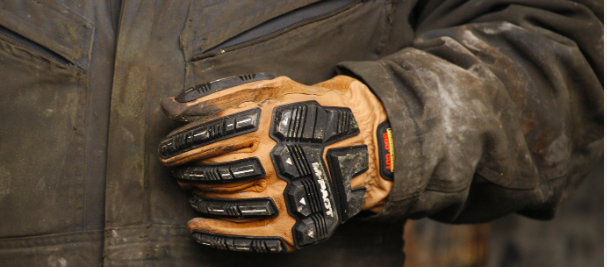Disposable vs Reusable gloves
A lot has been written regarding disposable and reusable gloves. The discussion has often centered around which is better to use within a particular industry or organization. The reality is that both types of gloves are appropriate for use within every industry and location. The question to answer today is, when is one more suitable than the other as defined by the task. You may determine that selecting and maintaining an inventory of both types of gloves is the right choice for your organization.
There must first be an effective risk assessment conducted for the general workplace and for specific-assigned tasks to determine the nature of the hazards and then to identify the right solutions that are unique to those hazards. Here are examples of when one may be more appropriate than the other, based on the task.
Disposable gloves
A disposable glove is generally a thin thickness glove intended for immediate, single-use tasks. Often used in the food/beverage service and healthcare industries to act as a barrier that protects the wearer and the recipient from cross-contamination from foods or body fluids, use of disposable gloves has expanded into almost every industry sector. The result is a glove that is lightweight, economically priced, generally touch- and temperature-sensitive, and with a snug fit, available in various hand sizes to prevent tearing when donning.
Industries like the food and beverage industry have additional criteria for selecting gloves. For example, if a glove will be used to contact or handle food ingredients, the glove must be labeled as food grade, adhering to the US FDA requirements found in 21 CFR Part 177 as well as considering how the gloves will be used. This standard is multi-faceted, encompassing an array of requirements. The best option for those in the industry is to identify and select gloves that are labeled as FDA food-safe and match the glove material with the task to be completed.
When selecting any glove for protection against chemicals, always reference a chemical compatibility chart to determine which of the glove materials meet or exceed your exposures.
Disposable gloves are manufactured using natural rubber latex, nitrile, or vinyl as the material is selected based on the type of hazard exposure.

Nitrile
Nitrile is a synthetic rubber material that holds up well to chemicals, greases, oils, and solvents. Free of latex for those with latex-sensitive skin, nitrile gloves are made to be hand and finger forming. This allows for better comfort and sensory nerve function for touch and feel.
Uses
Nitrile is a preferred choice of glove for healthcare, food and beverage manufacturing, and general manufacturing tasks. Available in various thicknesses measured in millimeters (or mils), general use nitrile gloves are 4-5 mil of thickness. To maintain cost effectiveness, disposable gloves generally do not exceed 8 mil. Economy nitrile disposables may be 3 mil thick, but they are more subject to tearing or ripping while donning and, because of its thin material, do not maintain form or fit very well.
One of the drawbacks to nitrile is its traditional inability to break down in landfills, meaning it is not biodegradable. This can pose concerns for those organizations wanting to achieve ‘zero landfill’ goals in sustainability programs. However, there are programs that allow nitrile disposal for recycling and energy use in co-generation facilities.
Mechanix Wear, a global PPE manufacturer, takes personal protection and environmental sustainability seriously. Using new technology, it has developed and manufactures a more bio-friendly nitrile glove so there is no compromise or conflict between securing a glove that protects workers from specific hazards that are compatible with nitrile use and environmental concerns.
Mechanix Wear's Nickelbacks gloves are 6 mil disposable gloves offering unique features, such as sweat absorption and EcoTek® technology, which allows the nitrile to break down in landfills within a couple of years. The Nickelbacks’ 6 mil thickness makes it more protective and durable for when extended wear is necessary, and its finger and palm texture provides better grip, dexterity with parts and tools, and is waterproof.

Latex
Latex is made of natural rubber. It’s available in various thicknesses to address specific exposures while performing tasks. Latex lasts longer than nitrile, and provides good protection against heat, chemicals, and body fluids.
Uses
Because latex is made from natural rubber, latex gloves are naturally chemical resistant. Latex is durable, provides a comfortable fit, and gives excellent dexterity and feel. Latex naturally provides a level of puncture resistance, which is enhanced when greater latex thicknesses are selected.
Latex material can be used for food preparation, unless it will contact fats, which will cause the glove to degrade and contaminate the food. So, it’s important to understand the task and what will be introduced as exposures while performing the task.
Another drawback to latex is what is identified as a latex allergy. Most people are not allergic to latex directly, but show skin sensitivity to the powder that is used during manufacturing to keep the latex from adhering to the hand forms. Obtaining powder-free latex does not resolve the potential for latex sensitivity but it does address the concerns around the powder sensitivity. If used in medical settings, the patient’s sensitivity to latex must also be evaluated with that of the wearer. The textured grip throughout the palm and fingers ensure the wearer has a firm handle with the tool or part.
Mechanix Wear 7 mil Disposable Latex Gloves are available powder-free and are one of the thicker disposable options. They provide greater durability and puncture resistance than thin gloves, while also providing a greater level of protection against dirt, grease, oils, and chemicals. This waterproof glove is perfect for cleaning and spraying tasks in automotive, industrial, and maintenance work.
Vinyl
A vinyl glove is the least expensive of the three glove materials. For light exposures, vinyl can be a good choice. Vinyl is anti-static, lightweight, and easy to don and doff. It is also latex-free.
Uses
Vinyl is a good selection for the budget-conscious, as well as for handling foods and beverages, cleaning agents, and grease. Vinyl works well as a protective barrier against detergents, dyes, and low-risk body fluids. It’s waterproof, meaning water will not pass through the glove, but it traps sweat and heat inside the glove. If worn for extended periods, these factors can result in skin irritation or dermatitis.
Disposable Gloves Recap
For immediate, short-term (single shift) protection, disposable nitrile, latex, or vinyl gloves may be the perfect solution to protect against certain chemicals, cleaning solutions, greases, and oils. When in doubt, always reference a chemical compatibility chart.
Disposable gloves are generally up to 8 mil in thickness. Anything thicker starts to become cost-prohibitive for single-use gloves and can also likely “over-protect,” meaning it has more protective properties than is needed for the length of time and type of task performed.
Mechanix Wear PPE experts can partner with and assist employers in identifying and selecting the right PPE for the hazard exposure.

Reusable gloves
A reusable glove is generally made of thicker (5+) nitrile material that is blended or combined with PVC (polyvinylchloride) or other protective material (steel thread, Kevlar®, Nomex®, other innovative fabrics) to protect the wearer from specific hazards such as hot liquids, harsh chemical exposures, impact/vibration, and cut hazards.
Depending on the task and need, a reusable glove is available in multiple sizes to provide a better fit since the thickness or bulkiness of the glove may impede dexterity if sized incorrectly. Reusable gloves should be washed in warm water and mild soap between uses to remove contaminants, debris, and dirt so it is ready for the next task. The actual wash instructions can vary per glove depending on what they’re made of.
Reusable gloves can be passed among multiple users, but best practice is to have each user assigned their own pair of gloves. This eliminates a user being potentially exposed to another user’s sweat or other contaminants that may accumulate inside the glove.
Uses
A reusable glove is made for long-term wear and use, and designed for multiple types of hazards. As a result, it is necessary to conduct an effective risk assessment to reveal which specific hazards a given glove is suited for.
Because of how reusable gloves are made, it’s expected for the gloves to be durable for long-term wear. The best practice is to provide employees gloves designed to meet the employees’ specific tasks. It’s also acceptable to make gloves readily and conveniently available at the point of use within the facility–specifically, if multiple employees are performing the same task for short periods of time. For example, using a parts cleaner may only require minutes of use, but multiple employees may use that same parts cleaner with various parts throughout the day, requiring that they use the same gloves.
For longer-term wear (across multiple tasks or multiple shifts), reusable gloves are generally more budget-friendly than disposables. Most reusable gloves also tend to have protective design elements or features that disposable gloves simply can’t accommodate, such as anti-impact padding or puncture-proof palms. Heat-resistant gloves such as welding or foundry gloves are also built to withstand temperatures that would quickly melt any disposable glove.
Here are some hazards that are reusable gloves can handle that disposables can’t:
- Impacts
- Cuts and punctures
- Extreme chemicals
- Thermal (excess heat or hot surfaces/excess cold) surfaces or rooms
- Environmental temperatures, humidity, and water
- Needlesticks
- Bio-fluids
- High visibility
- Others
Reusable gloves are designed for use for tasks in every industry. Industry examples include:
- Heavy Manufacturing
- Oil/Gas Upstream/Midstream
- Mining
- Utilities
- Waste Management
- Military/Law Enforcement/Security
- Food/Beverage
- Construction
- Pulp/Paper
Reusable Gloves Recap
Reusable gloves are available for any identified hazard in any industry. These gloves are designed and intended for long-term or repeat use. Because of the variety of gloves available, it is necessary to conduct an effective risk assessment to know which type of material and glove is needed to prevent purchasing and selecting the wrong glove and avoid exposing the wearer to the hazard.
Mechanix Wear Solutions
Regardless of your hand protection needs, Mechanix Wear can meet them. Through the Mechanix Wear Track Program you can partner with PPE experts who will help you conduct risk assessments and provide no-obligation trials of the glove solutions that match your hazard exposures. This allows for your front-line employees performing the tasks to test the gloves – to see and feel how well the gloves work while keeping them productive.
Don’t miss the opportunity to work with a global PPE partner and ensure you have selected the right PPE. Contact Mechanix Wear today to help meet your protection